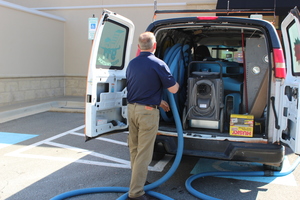The Science Behind Severe Storms and Tropical Storms
Severe weather events like storms and tropical cyclones have captivated human fascination for centuries. At 911 Restoration of Downriver, we believe that understanding the science behind these natural phenomena is crucial for everyone’s safety and preparedness. In this article, we’ll take you on a journey through the captivating world of severe storms and tropical cyclones, shedding light on their formation, lifecycle, and the advanced technologies used to predict and monitor them. 
The world of meteorology is a realm where science meets wonder, offering a deeper understanding of the complex interplay of atmospheric forces. Severe storms and tropical cyclones are remarkable manifestations of this intricate dance between air masses, temperature gradients, and moisture content.
Atmospheric Conditions and Formation
Severe storms and tropical cyclones both arise from specific atmospheric conditions. A vital factor is the convergence of warm, moist air with cold, dry air. This interaction creates instability in the atmosphere, setting the stage for these dramatic weather events. Temperature, humidity, and wind patterns play pivotal roles in determining the likelihood and intensity of such occurrences.
Life Cycle of Tropical Storms: Birth, Strength, and Dissipation
Tropical storms, known as hurricanes or typhoons in various parts of the world, follow a well-defined life cycle. They begin as clusters of thunderstorms over warm ocean waters. As heat energy from the warm water fuels the system, the storm gains strength, forming a distinct “eye” at its center, surrounded by a powerful “eyewall” of intense winds and rain. Eventually, these storms weaken and dissipate as they move over cooler waters or encounter land.
Anatomy of a Severe Storm
Severe storms encompass a range of intense weather phenomena, including thunderstorms, hail, and tornadoes. These storms thrive on a mix of elements: moisture, instability, and a lifting mechanism. Thunderstorms, for instance, form when warm, moist air rises and cools, creating towering cumulonimbus clouds that unleash lightning, thunder, heavy rain, and sometimes even tornadoes.
Predicting and Tracking
Meteorologists employ an array of scientific tools and methods to predict and track severe storms and tropical cyclones. By analyzing atmospheric conditions, satellite imagery, and computer models, experts can estimate the potential path and intensity of these events. Early detection and accurate forecasts are essential for issuing timely warnings and ensuring public safety.
Technological Advances in Storm Monitoring
In recent years, technology has revolutionized storm monitoring and prediction. Advanced weather radars provide real-time data on precipitation, wind patterns, and storm structure. Supercomputers process vast amounts of data to generate intricate models, improving our ability to anticipate storm behavior. Such advancements have significantly enhanced the accuracy and lead time of forecasts, enabling better preparation and response.
In a world where science continually unravels the mysteries of nature, the intricate dance of atmospheric forces that give rise to severe storms and tropical cyclones remains a captivating study. At 911 Restoration of Downriver, we emphasize the importance of understanding these phenomena. By appreciating the science behind these events, we can better prepare ourselves, protect our communities, and respond effectively when nature’s fury strikes. Remember, during such stressful emergencies, clear communication is paramount. Rest assured, we understand the importance of providing reliable information and assistance when you need it most. Call our IICRC certified techs today for same day remediation services.



